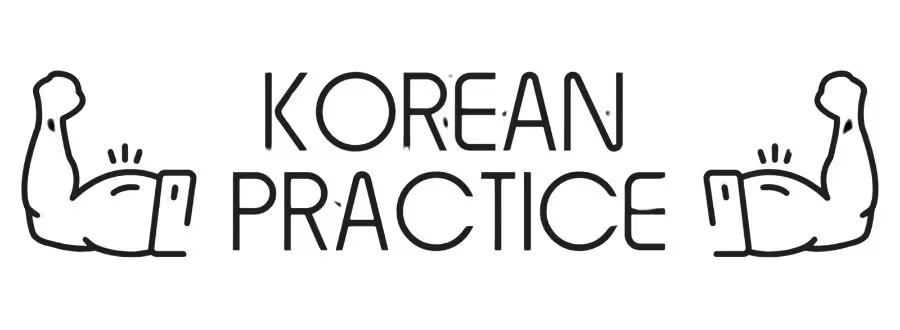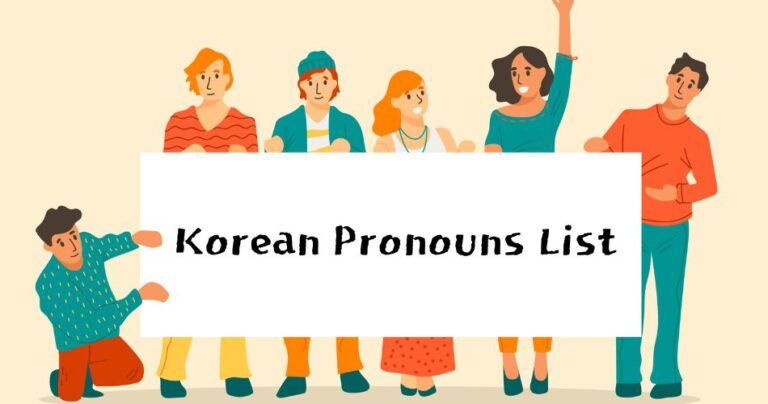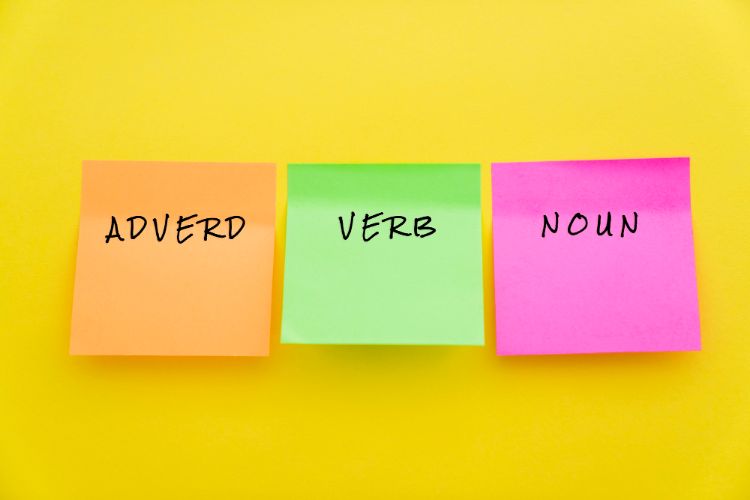Defining Korean Possessive Pronouns
Korean Possessive pronouns are known as 소유대명사. These words replace nouns and indicate ownership or possession. Unlike English, which has a variety of possessive pronouns (e.g., my, your, his, her), Korean possesses a unique set of possessive pronouns, each serving a distinct purpose.
“Of” or “ ‘s” in Korean
In the Korean language, “의” (pronounced as “e” or “ui”) is a crucial component when indicating possession or ownership in a sentence. It functions as a possessive particle and is attached to the subject of the sentence to signify that the subject possesses something.
Varieties of Korean Possessive Pronouns
Korean possesses several Korean possessive pronouns, each with its own specific usage. These pronouns include:
- 나의 (na-e): Equivalent to “my” or “mine” in English.
- 너의 (neo-e): Equivalent to “your” or “yours” in English.
- 그의 (geu-e): Equivalent to “his” in English.
- 그녀의 (geu-nyeo-e): Equivalent to “her” in English.
- 우리의 (u-ri-e): Equivalent to “our” in English.
- 그들의 (geu-deu-re): Equivalent to “their” in English.
Each of these Korean possessive pronouns is essential in different contexts, depending on the speaker and the possessive relationship.
Usage of Korean Possessive Pronouns
Using the right Korean possessive pronouns is crucial to convey the intended message accurately. Here are some key guidelines:
1. 나의
Use “나의” when you want to indicate possession in the first person, equivalent to “my” or “mine” in English.
Original Korean Sentence
A: 그것은 나의 책임이야. B: 아니야. 우리의 책임이야.
Pronunciation Guide
A: 그거슨 (geu-geo-seun) 나에 (na-e) 채기미야 (chae-gi-mi-ya). B: 아니야 (a-ni-ya). 우리에 (u-ri-e) 채기미야 (chae-gi-mi-ya).
Meaning and Context
A: 그 (that) 것 (thing) 은 (my topic is that) 나의 (my) 책임 (responsibility) 이야 (is; I’m telling you casually). B: 아니 (no) 야 (I’m telling you casually). 우리의 (our) 책임 (responsibility) 이야 (is; I’m telling you casually).
English Translation
A: That’s my responsibility. B: No, it’s our responsibility.
Literal Translation
A: That thing’s my responsibility. B: No, (it)’s our responsibility.

2. 너의
“너의” signifies the second person’s ownership, similar to “your” or “yours” in English.
Original Korean Sentence
A: 너의 이름이 뭐야? B: 나의 이름은 용준이야.
Pronunciation Guide
A: 너에 (neo-e) 이르미 (i-reu-mi) 뭐야 (mwo-ya)? B: 나에 (na-e) 이르믄 (i-reu-meun) 용주니야 (yong-ju-ni-ya).
Meaning and Context
A: 너의 (your) 이름 (name) 이 (I’m going to ask you about your name) 뭐 (what) 야 (is; I’m asking you casually)? B: 나의 (my) 이름 (name) 은 (my topic is my name you mentioned) 용준 (given name) 이야 (is; I’m telling you casually).
English Translation
A: What’s your name? B: My name is Yongjun.
3. 그 남자의
In Korean, the phrase ‘그 남자의’ is a prime example of Korean Possessive Pronouns in action, where ‘그’ functions as a demonstrative adjective meaning ‘that’, and ‘남자’ means ‘man’, resulting in the literal translation ‘that man’s’. This construction is equivalent to the English possessive pronoun ‘his’, highlighting the nuances of Korean Possessive Pronouns in conveying ownership and relationships.
Original Korean Sentence
A: 그 남자의 목소리가 좋아?. B: 응. 아주 좋아.
Pronunciation Guide
A: 그 (geu) 남자에 (nam-ja-e) 목쏘리가 (mok-sso-ri-ga) 조아 (jo-a)?. B: 응 (eung). 아주 (a-ju) 조아 (jo-a).
Meaning and Context
A: 그 (that) 남자 (man) 의 (‘s) 목 (throat) 소리 (sound) 가 (my subject is his voice) 좋 (to be good) 아 (is; I’m asking you casually)?. B: 응 (yes; in a casual way). 아주 (very) 좋 (to be good) 아 (I’m telling you casually).
English Translation
A: Is his voice good? B: Yes. Very good.
Literal Translation
A: Is that man’s voice good? B: Yeah, very good.
4. 그 여자의
Korean possessive pronouns, such as “그 여자의”, are used to indicate possession, similar to “her” in English, with “그 여자” being the literal translation of “that woman.”
Original Korean Sentence
A: 그 여자의 핸드백이 비싸? B: 아니. 싸.
Pronunciation Guide
A: 그 (geu) 여자에 (yeo-ja-e) 핸드배기 (haen-deu-bae-gi) 비싸 (bi-ssa)? B: 아니 (a-ni). 싸 (ssa).
Meaning and Context
A: 그 (that) 여자 (woman) 의 (‘s) 핸드백 (handbag) 이 (my subject is her handbag) 비싸 (to be expensive) 아 (is; I’m asking you casually)? B: 아니 (no; in a casual way). 싸 (to be cheap) 아 (is; I’m telling you casually).
Pronunciation Patterns for Conjugations
* 싸 + 아 = 싸
When rapidly pronounced, ‘싸’ and ‘아’ naturally combine to form ‘싸’.
English Translation
A: “Is her handbag expensive?” B: “No. It’s cheap.”
Literal Translation
A: “Is that woman’s handbag expensive?” B: “No. (It)’s cheap.”
5. 우리의
“우리의” signifies joint ownership, similar to “our” in English.
Original Korean Sentence
A: 우리의 꿈은 세계 여행이야. B: 꿈은 이루어져.
Pronunciation Guide
A: 우리에 (u-ri-e) 꾸믄 (ggu-meun) 세계 (se-gye) 여행이야 (yeo-haeng-i-ya). B: 꾸믄 (ggu-meun) 이루어져 (i-ru-eo-jyeo).
Meaning and Context
A: 우리의 (our) 꿈 (dream) 은 (our topic is our dream) 세계 (world) 여행 (travel) 이야 (is; I’m telling you casually). B: 꿈 (dream) 은 (my topic is dream) 이루어지 (to come true) 어 (I’m telling you casually).
Pronunciation Patterns for Conjugations
* 지 + 어 = 져
When rapidly pronounced, ‘지’ and ‘어’ naturally combine to form ‘져’.
English Translation
A: “Our dream is to travel the world.” B: “Dreams do come true.”
Literal Translation
A: “Our dream is world travel.” B: “Dream come true.”
6. 그들의
“그들의” is used to convey joint ownership in the third person plural, equivalent to “their” in English.
Original Korean Sentence
A: 그들의 생각이 맞아? B: 음.. 아마도.
Pronunciation Guide
A: 그드레 (geu-deu-re) 생가기 (saeng-ga-gi) 마자 (ma-ja)? B: 음 (eum).. 아마도 (a-ma-do).
Meaning and Context
A: 그들의 (their) 생각 (thoughts) 이 (I’m going to ask you about their thoughts) 맞 (to be correct) 아 (are; I’m asking you casually)? B: 음 (hmm).. 아마도 (probably).
English Translation
A: Are their thoughts correct? B: Hmm… probably.
Conclusion
Discover the versatility of Korean possessive pronouns for expressing ownership and emotion uniquely, enhancing language skills and appreciation for the language. Learn how to excel in Korean by understanding their power. Additionally, explore Demonstrative Pronoun Phrases to enrich your Korean learning further.







